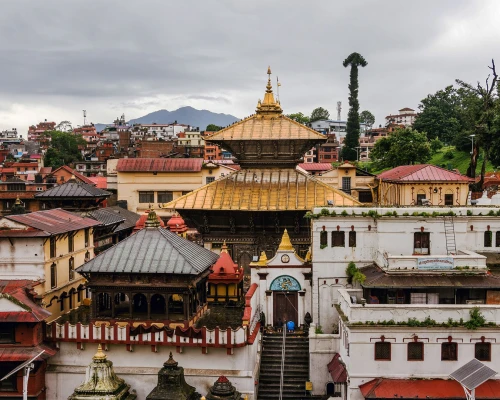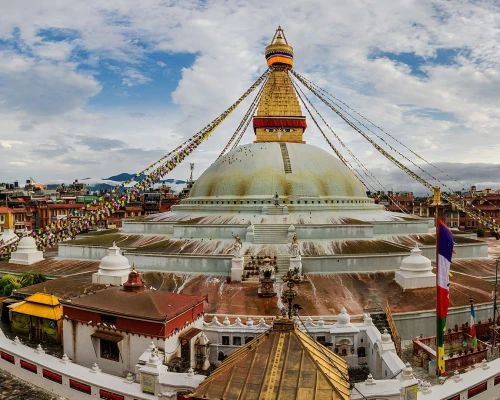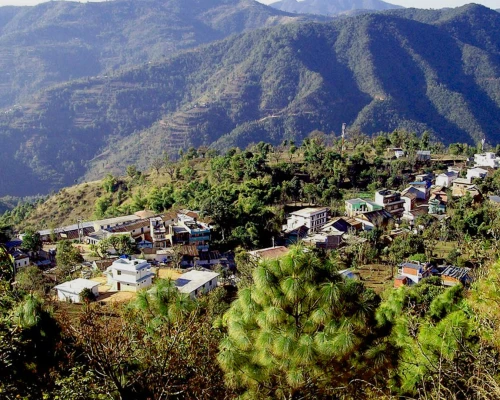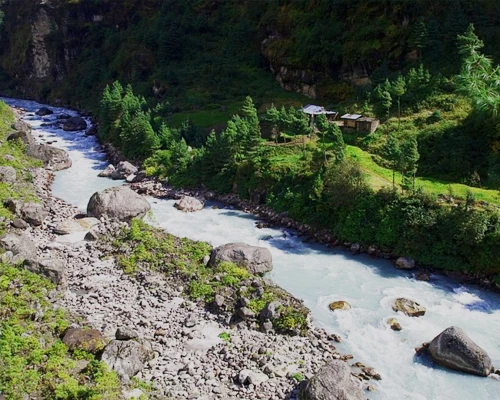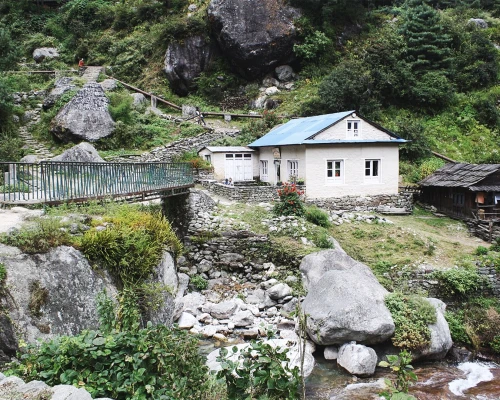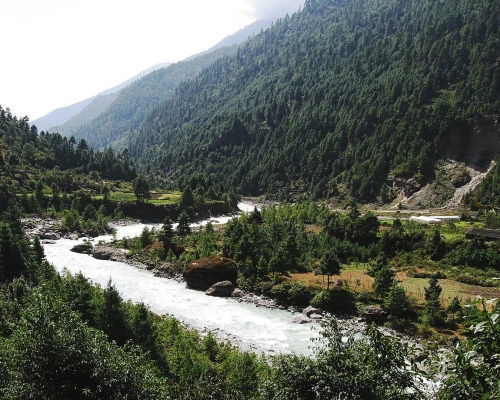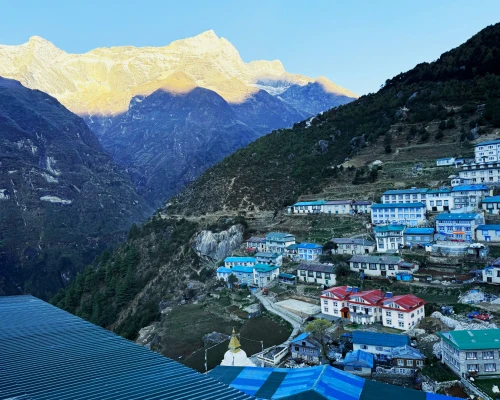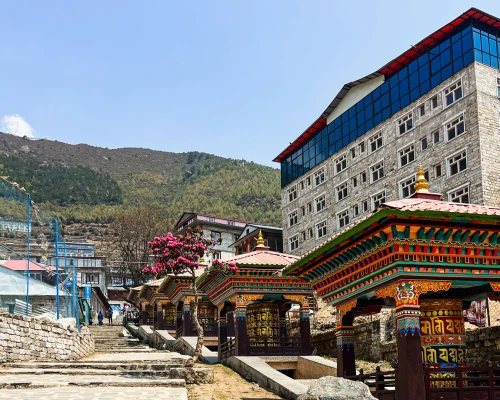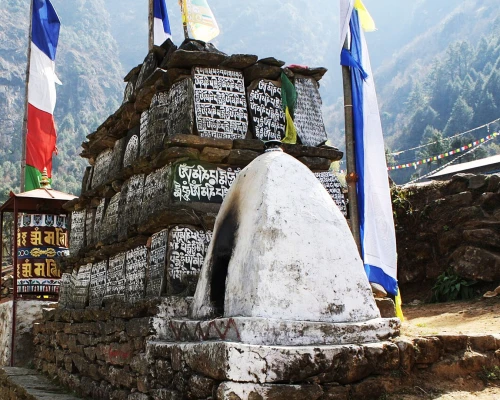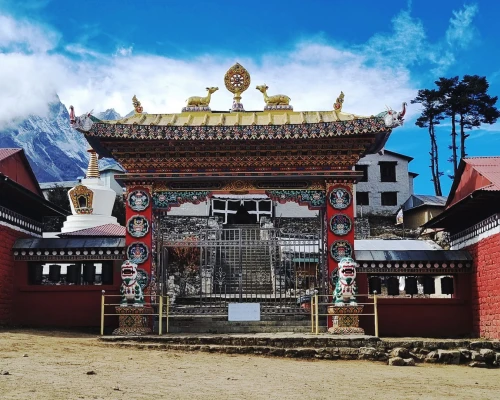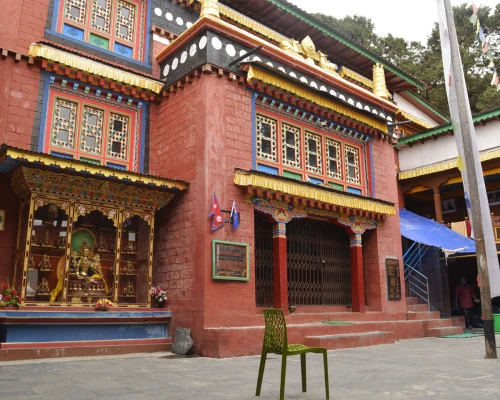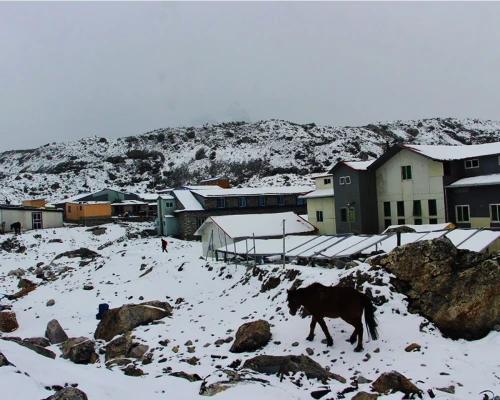The Everest base camp trek by road is a unique and adventurous journey that offers a distinct perspective on reaching the iconic campsite of Mount Everest, the world's highest peak, by road. This EBC by road trek, which is known for being difficult but also rewarding, is an option for people who want to do something different from the usual flight to Lukla.
This epic Everest base camp trek without flight unfolds over 16 days, covering approximately 700 kilometers of breathtaking landscapes. You'll ascend from the bustling city of Kathmandu (1400 m) to the iconic Everest Base Camp (5364 m), all while riding in a jeep.
This Everest base camp trek without flight highlights the unparalleled beauty of the Khumbu region, allowing for a gradual immersion into the stunning landscapes and rich cultural tapestry of the Everest region.
One of the main attractions of this Everest base camp trek by jeep is the opportunity to explore the vibrant Sherpa villages along the way. From Namche Bazaar, a bustling market town, to the ancient Tengboche Monastery, trekkers witness the unique blend of traditional Sherpa culture and breathtaking mountain views, including Ama Dablam and Everest itself.
The trekking route to Everest base camp by road (without flight) takes trekkers through picturesque landscapes, including dense forests, suspension bridges over roaring rivers, and high-altitude deserts. The scenery evolves as trekkers ascend, offering glimpses of snowy peaks, glaciers, and the iconic Khumbu Icefall. This varied terrain provides a sensory feast for adventure enthusiasts.
While this Everest base camp trek by jeep operates throughout the year, the best seasons are spring (March–May) and autumn (October–November). These months offer comfortable temperatures, clear skies, and vibrant landscapes. Imagine trekking through rhododendron forests ablaze with color or witnessing the Himalayas bathed in the golden hues of autumn.
Apart from the physical challenge and the awe-inspiring scenery, trekking to Everest base camp by road brings various benefits, including deeper cultural immersion, enhanced acclimatization, and a more gradual ascent, reducing the risk of altitude-related issues.
This Everest base camp trek without a Lukla flight is the best choice for those who want to skip landing at Lukla, the most dangerous airport in the world. Additionally, trekkers have the chance to experience the warmth and hospitality of the local Sherpa communities.
We offer a seamless and memorable Everest base camp trek by road experience. We prioritize safety, comfort, and authenticity, offering knowledgeable guides, well-planned itineraries, and well-equipped accommodations. Join us on this extraordinary journey and let the road to Everest Base Camp become an unforgettable adventure.
The Everest base camp trek without flight to Lukla presents a distinctive and rewarding way to reach the base of the world's highest peak. With its unique attractions, diverse landscapes, and cultural immersion, this trek offers an unparalleled adventure for those seeking a different perspective on the Everest region. Start this extraordinary journey with our dedicated service, and let the Himalayas unveil their grandeur in an unforgettable way.
Major Attractions of Everest Base Camp Trek by Jeep
- Enjoy the comfort and convenience of a jeep journey, offering stunning views without the strenuous effort of hiking.
- With the transportation covered, you have more time to explore villages, monasteries, and viewpoints along the way.
- Cross the iconic suspension bridge, a thrilling test of your nerve over the roaring Dudh Koshi River.
- Witness iconic giants like Ama Dablam, Lhotse, Nuptse, and of course, Mount Everest, soaring towards the sky from every angle.
- Hike through vibrant rhododendron forests in spring, their pink and red blossoms painting the landscape in a mesmerizing display.
- Follow the gurgling Dudh Koshi River, its turquoise waters contrasting with the rugged mountains and offering serene riverside scenes.
- Enjoy breathtaking panoramic views from vantage points like Kala Patthar and Tengboche Monastery, encompassing valleys, peaks, and glaciers.
- Experience a captivating change in scenery, from lush valleys and cascading waterfalls to barren high-altitude terrain with glaciers and snow-capped peaks.
- Visit ancient monasteries like Tengboche and Namche, soaking in their spiritual atmosphere and admiring their colorful murals and prayer flags.
- Combine the road journey with short treks to viewpoints, monasteries, and hidden villages for a more active experience.
- Keep an eye out for Himalayan tahrs, langurs, eagles, and other fascinating creatures in their natural habitat.
Everest Base Camp Trek by Road Details
- Total trip duration: 16 days
- Trekking duration: 12 days
- Driving duration: 2 days
- Starting point: Kathmandu
- Ending point: Kathmandu
- Maximum altitude: 5,545 meters (Kala Patthar)
- Minimum altitude: 1,400 meters (Kathmandu)
- Road transportation: By private vehicle
- Meals: Breakfast, Lunch and Dinner
- Accommodation: Teahouses and Hotels
- Major attractions: mountain ranges and peaks, hills, rivers, lakes, cascades, icefalls, local settlement and culture, flowers and wilderness, monasteries, shrines, Chortens, memorials, etc.
- Mountains viewed: Everest (8848m), Lhotse (8516m), Lhotse Shar (8393m), Nuptse (7861m), Tengi ragi tau (6983m), Ama Dablam (6814m), Thamserku (6608m), Tobuche (6501m), Kusum Kanguru (6367m), Shar (6093m), Nupla (5885m), Khumbila (5761m), Kabsila (5583m)
Best Season for Everest Base Camp Trek by Road
The best times for the Everest Base Camp trek by road are spring (March to May) and autumn (September to November). During spring, temperatures rise, flowers bloom, and the landscape bursts with vibrant colors. The trails are adorned with rhododendron blossoms, creating a picturesque setting as you make your way to Everest Base Camp. The days are moderately warm, and the nights are relatively mild, offering comfortable trekking conditions.
Autumn is another great time for the road trek to Everest Base Camp. After the monsoon rains clear, you're greeted with crystal-clear skies and breathtaking views of the surrounding peaks. The air is crisp, visibility is excellent, and the trekking trails are in prime condition. This season provides an ideal setting for an unforgettable journey without the interference of rain or snow.
For the more adventurous, the Everest base camp trek without Lukla flight can also be done in January and February, but with caution. These winter months bring colder temperatures and the possibility of snowfall, especially at higher altitudes. If the weather conditions are favorable, trekking during this time offers a unique experience with fewer crowds and a tranquil mountain landscape covered in a blanket of snow.
Everest Base Camp Trek By Road Cost for 2026 and 2027
The Everest Base Camp trek by road is an adventure of a lifetime, and understanding the costs involved is crucial for planning your journey. For the years 2026 and 2027, our Everest base camp trek by road cost for the group joining package is $1650. This package is designed for those who prefer to trek with a group, sharing the experience with fellow enthusiasts.
The group joining package covers a range of services, including accommodation, meals, permits, transportation, and the expertise of our experienced guides. Trekking with a group adds a social element to the adventure, allowing you to share the incredible moments and challenges with like-minded individuals.
For those seeking a more private and personalized experience, we offer private trek options. For detailed information on private trek costs, please contact us during the booking process. Our team is dedicated to tailoring the experience to your preferences and ensuring that your Everest Base Camp trek by road is not only memorable but also fits your individual needs.
Book now and get free t-shirts, caps, and stickers.



